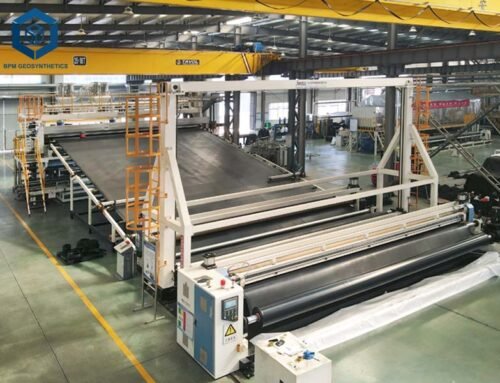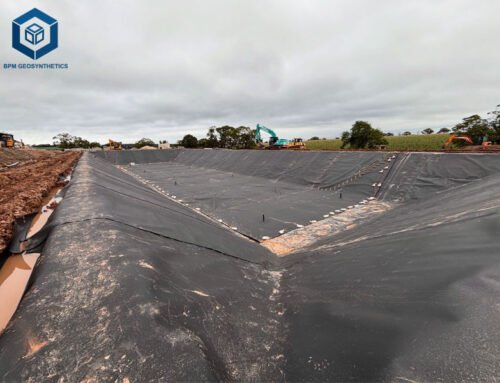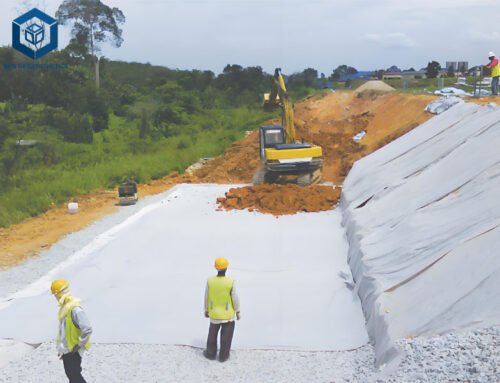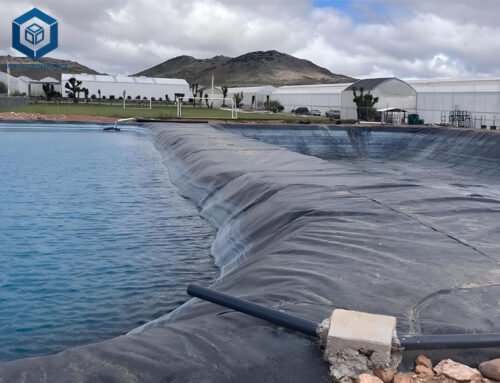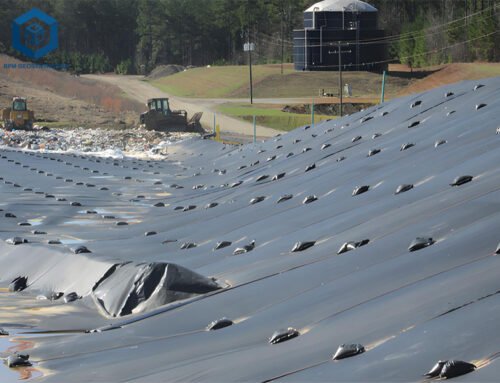High Density Polyethylene (HDPE) geomembrane is essential for a wide range of applications, from landfill liners to water management systems, due to their durability, chemical resistance, and cost-effectiveness. As environmental regulations tighten and infrastructure projects expand globally, the demand for High Density Polyethylene geomembrane has surged, with the global geomembrane market valued at approximately USD 2.34 billion in 2023 and projected to grow at a CAGR of 5.5% through 2032. Understanding High Density Polyethylene geomembranes Cost is critical for project managers, engineers, and procurement teams aiming to balance quality and budget. This comprehensive guide explores the factors influencing High Density Polyethylene geomembrane costs, provides detailed pricing insights, and offers actionable advice for selecting the right product for your project.
1. Understanding High Density Polyethylene Geomembrane
1.1 What is an High Density Polyethylene Geomembrane?
An High Density Polyethylene geomembrane is a synthetic liner made from high-density polyethylene resin, designed to provide impermeable barriers for containment applications. With a density of 0.94 g/cm³ or higher, High Density Polyethylene geomembranes offer exceptional resistance to chemicals, UV radiation, and environmental stress cracking. They are widely used in industries such as waste management, mining, water management, and civil construction, ensuring environmental protection and operational efficiency.
1.2 Key Specifications of High Density Polyethylene Geomembrane
- Thickness: Ranges from 0.2 mm to 3.0 mm (8 to 120 mils), with common options including 0.75 mm, 1.0 mm, 1.5 mm, and 2.0 mm.
- Width: Standard rolls range from 4 to 10 meters (13 to 33 feet), customizable based on project needs.
- Length: Rolls typically measure 50 to 100 meters (164 to 328 feet).
- Tensile Strength: 15 to 35 MPa, ensuring durability under stress.
- Colors: Black (with carbon black for UV resistance), white, or dual-colored (e.g., black/green) for aesthetic or functional purposes.
- Surface Finish: Smooth or textured for enhanced friction on slopes.
- Certifications: Meets GRI GM13 standards, ISO 9001, and OEKO-TEX for quality and safety.
High Density Polyethylene geomembranes are manufactured with 97.5% virgin polyethylene, 2.5% carbon black, and trace antioxidants and stabilizers, ensuring long-term performance (up to 50–70 years in optimal conditions).
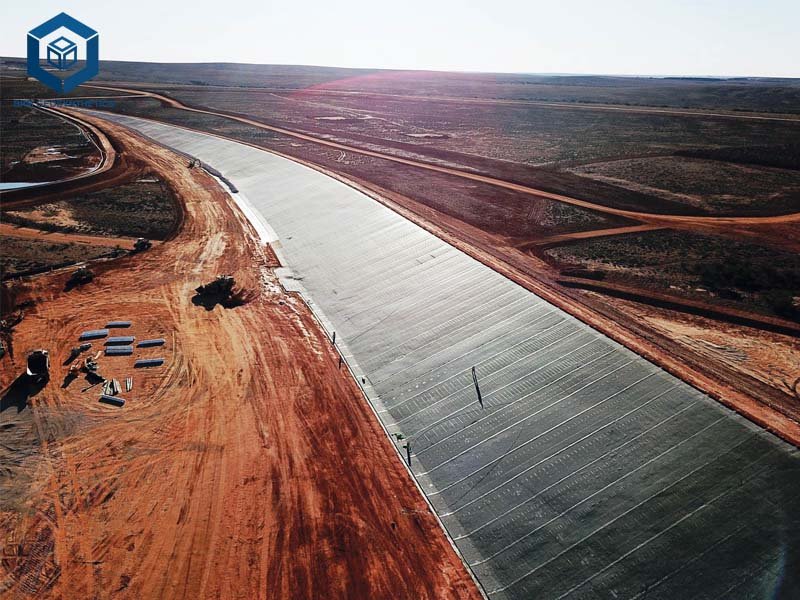
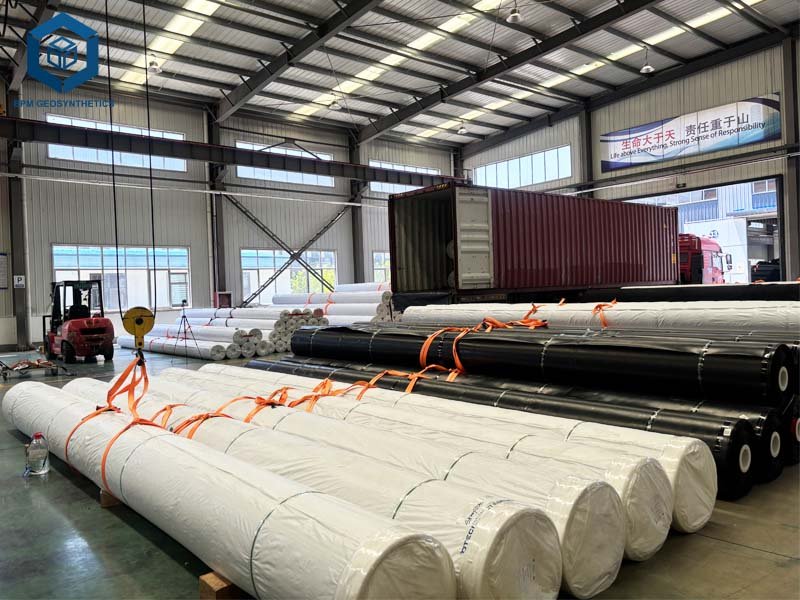
2. Factors Influencing High Density Polyethylene Geomembrane Cost
The High Density Polyethylene geomembrane cost varies widely based on several factors. Understanding these can help you estimate budgets accurately and avoid unexpected expenses.
2.1 High Density Polyethylene Geomembrane Cost – Thickness
Thicker geomembranes cost more due to increased material usage and enhanced durability. For example:
- 5 mm (20 mil): $0.50–$1.50 per square meter, suitable for lightweight applications like small ponds.
- 0 mm (40 mil): $1.00–$2.50 per square meter, ideal for medium-sized reservoirs or fish ponds.
- 0 mm (80 mil): $2.00–$4.50 per square meter, used in high-load applications like landfills.
Thicker liners (e.g., 2.0 mm) offer 30% greater puncture resistance than thinner options, justifying the higher cost for critical projects.
2.2 High Density Polyethylene Geomembrane Cost – Surface Type
- Smooth High Density PolyethyleneGeomembranes: Cost $0.50–$4.00 per square meter, depending on thickness. These are standard for flat surfaces.
- Textured High Density PolyethyleneGeomembranes: 10–20% more expensive ($0.60–$4.80 per square meter) due to enhanced friction for slopes (e.g., 3H:1V slopes).
Textured liners improve stability by 15% on sloped surfaces, reducing installation risks in projects like tailings dams.
2.3 High Density Polyethylene Geomembrane Cost – Raw Material Costs
High Density Polyethylene geomembrane prices are tied to polyethylene resin costs, which fluctuate based on crude oil prices and market dynamics. In Q1 2025, High Density Polyethylene prices in the USA reached $1,242/MT, driven by rising ethylene costs and supply disruptions from Winter Storm Enzo. Recycled High Density Polyethylene (R-High Density Polyethylene) is 20–30% cheaper, with prices at $770–$1,560/MT globally in Q3 2024, but may have lower durability.
2.4 High Density Polyethylene Geomembrane Cost – Project Specifications
Custom specifications, such as non-standard widths or colors, increase costs by 5–15%. For example, green/black dual-colored geomembranes for aesthetic applications cost 10% more than standard black liners.
2.5 High Density Polyethylene Geomembrane Cost – Installation Requirements
Installation costs vary based on site conditions and labor expertise:
- Site Preparation: $0.10–$0.50 per square meter for clearing debris and leveling surfaces.
- Welding: $0.20–$0.80 per linear meter for extrusion or wedge welding, with textured liners requiring specialized equipment.
- Labor: $0.50–$2.00 per square meter, higher in regions like North America ($1.50–$2.00) compared to Asia ($0.50–$1.00).
Certified crews can increase installation costs by 10% but reduce failure rates by 25%.
2.6 High Density Polyethylene Geomembrane Cost – Quantity and Order Size
Bulk orders reduce costs per square meter. For example:
- Orders under 5,000 m²: $1.50–$4.50 per square meter.
- Orders over 20,000 m²: $1.00–$3.50 per square meter, with discounts of 10–20%.
2.7 High Density Polyethylene Geomembrane Cost – Geographic Location
Freight costs vary by region. In Q1 2025, shipping costs in North America rose 5% due to port disruptions, while Asia-Pacific markets benefited from lower freight rates due to oversupply.
2.8 High Density Polyethylene Geomembrane Cost – Manufacturer and Brand
Premium brands like GSE Holding, Solmax, and Taian BOWINS Garment Co., Ltd. charge 10–15% more for superior quality control and certifications. For instance, BOWINS’ High Density Polyethylene geomembranes meet GRI GM13 standards, ensuring 20% longer service life than non-certified alternatives.
3. Average High Density Polyethylene Geomembrane Cost
Based on recent data, here are average cost ranges for High Density Polyethylene geomembranes (excluding installation):
- 5 mm (20 mil): $0.50–$1.50/m²
- 75 mm (30 mil): $0.80–$2.00/m²
- 0 mm (40 mil): $1.00–$2.50/m²
- 5 mm (60 mil): $1.50–$3.50/m²
- 0 mm (80 mil): $2.00–$4.50/m²
- 5 mm (100 mil): $2.50–$5.50/m²
For a typical 10,000 m² landfill project using 1.5 mm textured High Density Polyethylene geomembranes, material costs range from $15,000 to $35,000, with installation adding $7,000–$25,000.
4. Cost Breakdown by Application
4.1 Landfill Liners
- Thickness: 1.5–2.0 mm for regulatory compliance (e.g., Subtitle D requires 60 mil minimum for High Density Polyethylene).
- Cost: $1.50–$4.50/m² for materials, $0.70–$2.50/m² for installation.
- Example: A 50,000 m² landfill using 2.0 mm High Density Polyethylenecosts $100,000–$225,000 for materials and $35,000–$125,000 for installation.
4.2 Pond and Reservoir Liners
- Thickness: 0.75–1.5 mm for fish ponds, 1.0–2.0 mm for reservoirs.
- Cost: $0.80–$3.50/m² for materials, $0.50–$1.50/m² for installation.
- Example: A 5,000 m² fish pond with 1.0 mm High Density Polyethylenecosts $5,000–$12,500 for materials and $2,500–$7,500 for installation.
4.3 Mining Operations
- Thickness: 1.5–2.5 mm for heap leaching and tailings containment.
- Cost: $1.50–$5.50/m² for materials, $1.00–$2.50/m² for installation.
- Example: A 20,000 m² tailings dam using 2.0 mm textured High Density Polyethylenecosts $40,000–$90,000 for materials and $20,000–$50,000 for installation.
4.4 Water Management (Canals, Irrigation)
- Thickness: 0.5–1.0 mm for cost-effective water retention.
- Cost: $0.50–$2.50/m² for materials, $0.30–$1.00/m² for installation.
- Example: A 15,000 m² canal with 0.75 mm High Density Polyethylenecosts $12,000–$30,000 for materials and $4,500–$15,000 for installation.
5. Cost-Saving Tips for High Density Polyethylene Geomembrane Projects
- Opt for Bulk Orders: Purchasing over 20,000 m² can reduce material costs by 10–20%.
- Choose Appropriate Thickness: Avoid over-specifying thickness; for example, 0.75 mm is sufficient for low-load applications like fish ponds, saving 30–50% compared to 1.5 mm liners.
- Select Local Suppliers: Sourcing from regional manufacturers like Taian BOWINS in Asia or Solmax in North America reduces freight costs by 5–15%.
- Use Recycled High Density Polyethylene: R-High Density Polyethyleneliners cost 20–30% less but verify suitability for your project’s durability requirements.
- Invest in Proper Installation: Certified crews reduce failure rates by 25%, preventing costly repairs (e.g., $5,000–$50,000 for leak fixes).
- Negotiate with Suppliers: Request quotes from multiple vendorslike BPM Geosynthetics to secure discounts, especially for large projects.
6. Comparing High Density Polyethylene Geomembranes to Alternatives
High Density Polyethylene vs. PVC Geomembranes
- Cost: High Density Polyethylene($0.50–$5.50/m²) is 10–20% cheaper than PVC ($0.60–$6.50/m²) for equivalent thickness.
- Durability: High Density Polyethylene’s crystalline structure offers 20% better chemical resistance but is prone to stress cracking, unlike flexible PVC.
- Installation: PVC is easier to install on slopes (3H:1V) without texturing, reducing costs by 10%.
High Density Polyethylene vs. LLDPE
- Cost: High Density Polyethyleneis 5–15% cheaper than LLDPE ($0.60–$6.00/m²) due to lower flexibility.
- Application: LLDPE is preferred for flexible applications like lagoon liners, while High Density Polyethylenesuits rigid containment.
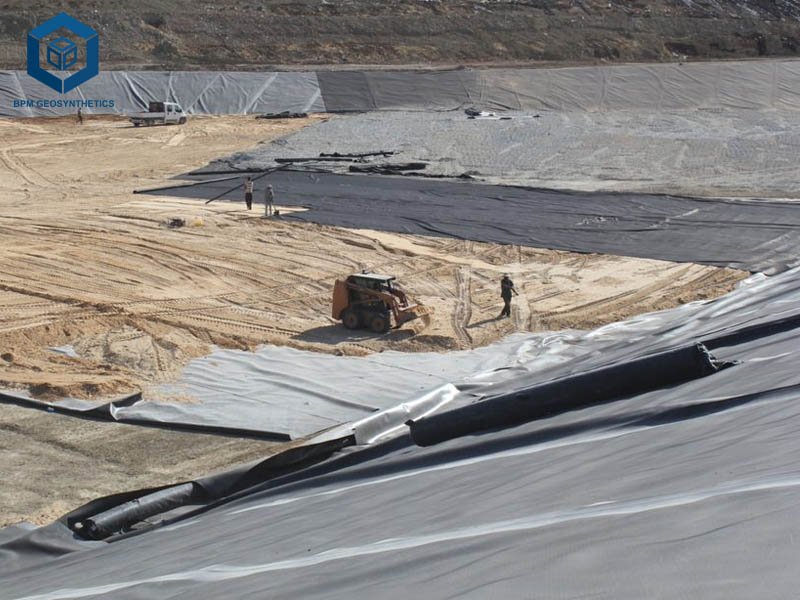
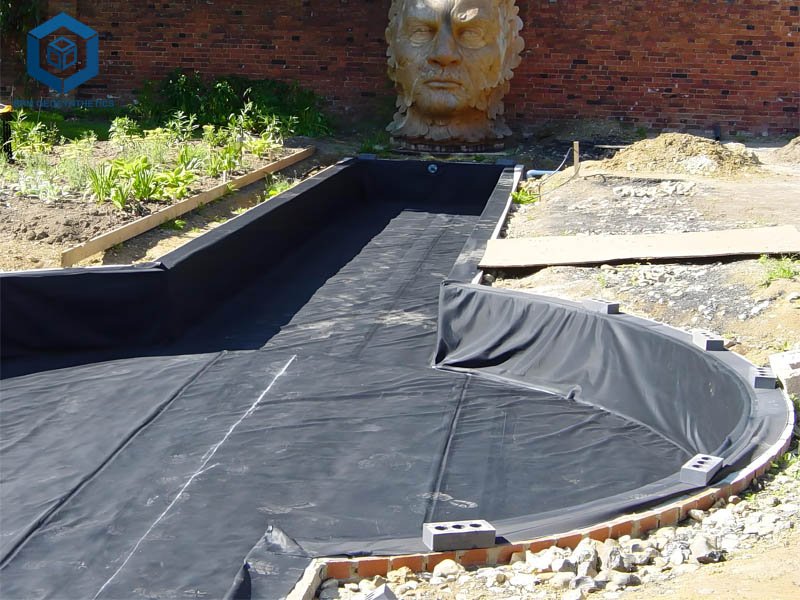
7. How to Budget for Your High Density Polyethylene Geomembrane Project
- Assess Project Needs: Determine thickness and surface type based on load and environmental conditions.
- Request Multiple Quotes: Compare pricing from at least three suppliers, including BOWINS, Solmax, and AGRU.
- Factor in Installation: Allocate 20–40% of the budget for site prep, welding, and labor.
- Plan for Contingencies: Add 10% to the budget for unexpected costs like repairs or delays.
- Leverage Bulk Discounts: Order large quantities to reduce material costs.
8. Conclusion
High Density Polyethylene geomembrane are a cost-effective, durable solution for containment projects, with prices ranging from $0.50 to $5.50 per square meter based on thickness, surface type, and project scale. Factors like raw material costs, installation requirements, and geographic location significantly influence pricing, but strategic choices—such as bulk orders or selecting local suppliers like BPM Geosynthetics—can yield savings of 10–30%. As the global market grows, driven by infrastructure and environmental needs, understanding these cost dynamics is essential for budgeting effectively. Contact reputable manufacturers like BPM Geosynthetics for tailored quotes and high-quality geomembranes that meet GRI GM13 standards.

